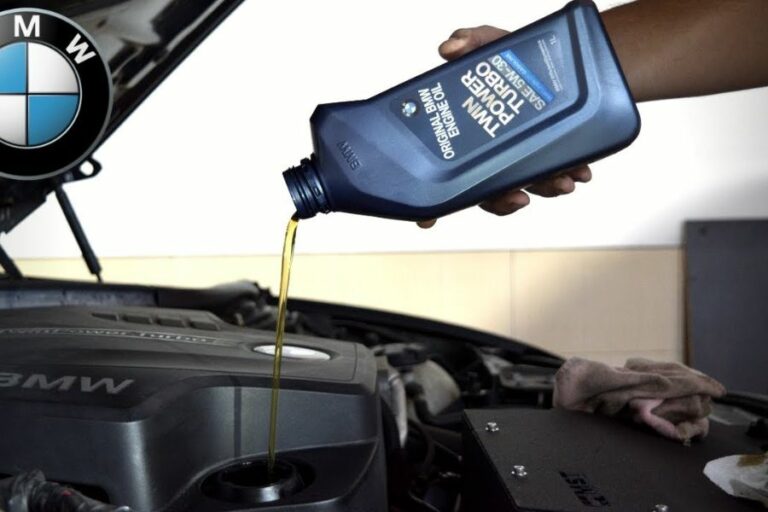Should I Change Transmission Fluid After 100k Miles? Know The Facts And Risks
The transmission fluid needs to be changed regularly, just like any other fluid in your car. However, the main concern arises when it comes to determining that specific interval. A common buzz among people is to leave the transmission fluid as it is until 100000 miles.
But as a conscious car owner, a question might pop up in your mind, should I change transmission fluid after 100k miles? Yes, you can. However, it depends on your vehicle type and transmission system. Let’s get into the detailed explanation.
Different Types of Transmission
You can’t make a sound judgment about whether to change your transmission fluid based on a particular mileage unless you’re familiar with transmission types and their mechanical system.
So, let’s first get acquainted with three significant types of transmission used in modern vehicles before the deep discussion.
Manual Transmission
A manual transmission is also known as a conventional transmission, a stick shift, or a clutch-engaged clutch arrangement.
This type of transmission utilizes one or more pedals or levers to engage or disengage the clutch to provide the appropriate level of torque transfer.
They are the simplest mechanically and so regarded as the most common of the three transmission types.
Manual transmissions have the most prolonged life cycles, with fewer peripherals to break or malfunction.
Alongside, they are typically considerably more successful in boosting fuel economy.
Read Also: Duramax Allison Transmission Fluid Change Interval
Automatic Transmission (AT)
An automatic transmission (AT) is a vehicle transmission that does not require the driver to change gears under usual driving conditions.
Automatic transmissions have no clutch pedal. They also don’t have a transmission shift.
Once the transmission system has been put in drive mode, you only need to press the gas pedal.
Continuously Variable Transmission
Continuously Variable Transmission, or CVT, is also an automatic transmission. However, it has a more complex mechanism than the standard automatic transmission.
CVT transmissions were once considered the car version of the block-stepper RC car.
Nevertheless, they are becoming a part of automobile technology that modern manufacturers simply can’t ignore.
It can be challenging to find a mainstream manufacturer that doesn’t require them to have at least some models. Now guess how critically influential they are.
Read Also: How to Honda Transmission Fluid Change
Should Your Mechanic Flush the Transmission Fluid?
Transmission fluid will gradually become contaminated or worn over time. At that time, your transmission system’s components are at risk of damage.
Getting rid of this dirty fluid is a good idea, is it not? If it lies in the service manual, go ahead with your instructions.
Still, contamination of the transmission system fluid isn’t a frequent occurrence. But if it does happen, there could be something more serious to worry about.
For cars with higher mileage, it’s preferable to simply bit by bit drain the fluid from the transmission as opposed to thoroughly flushing it.
This is because of the risk of clogging once the clean transmission fluid has been added. Whilst a fluid flush is quite effective for automatic transmissions.
So, you should consider the best possible care method for your particular vehicle because it will determine when it is the right time for a transmission drain or flush.
Read Also: Nissan Murano Transmission Fluid Change Interval
How Often Do You Need to Have the Transmission Fluid Changed?
Steering clear of impairments and keeping records of the car manufacturer’s maintenance intervals are the best ways to determine the schedule for changing your vehicle’s transmission fluid.
It is vital to remember that some vehicles have different maintenance intervals.
For vehicles manufactured by certain manufacturers, such scheduled periods can be as little as 30,000 miles. Whilst for others, it can be extended to more than 100,000 miles.
Automatic transmissions on some new vehicle models almost permanently seal the fluid channels in the transmissions. This enables fluid to be preserved for the life of the vehicle.
However, continuous variable transmissions (CVTs) require regular fluid checks and changes.
You ought to read the owner’s manual for more guidance on best practices and to keep records of such services.
Transmission fluid does not evaporate like fuel, so check fluid levels regularly. Leaking fluid can be indicated by a puddle of reddish fluid on the ground, usually found in the engine compartment or under the hood.
Read Also: Nissan Cvt Transmission Fluid Change Interval
What if I Don’t Know When the Transmission Fluid Changed Last?
Especially when you buy a car, it’s quite common that you don’t know whether the transmission fluid was ever changed before buying it. So, should you replace the transmission fluid or leave it alone?
It really hinges on the last time the transmission fluid was changed. In that case, you can follow the elbow mentioned tips:
Check the Service Records
Checking the maintenance history of an automobile is a good idea to find out whether the transmission was serviced.
If you have paperwork showing the work was completed at a particular schedule, the service could certainly go safely.
This will help you to determine whether you need further service or an overhaul should be skipped until the next scheduled service.
Examine the Fluid
The majority of older vehicles and some newer models still possess a dipstick that assists you in checking the transmission fluid.
Pull the dipstick out to ensure it is in the normal range, not overfilled, under-filled, or truly dirty-looking.
The ideal color is bright red and crystal clear, which indicates the vehicle has been recently serviced.
It has not recently had a fluid check if it’s dark reddish-brown, brownish, or appears full of particles.
Read Also: Toyota CVT Transmission Fluid Change Interval
FAQs.
We have gone through a deep discussion on different types of transmissions and the transmission fluid replacement schedule. However, if you still have any other queries, check the following FAQ section.
What is the risk of changing transmission fluid?
If you swap out the fluid following, they’re completely worn-out, which might lead to slipping. Generally, the highly contaminated fluid has some particles that facilitate increased gripping. These particles are absent in fresh fluid so you may notice sudden gear slipping.
Should I change my transmission fluid after 150000 miles?
Many manufacturers’ service recommendation for automatic transmissions doesn’t call for fresh fluid until 100,000 miles. With some Ford transmissions, it’s even 150,000 miles. However, some experts say it should be performed every fifty thousand miles instead.
Is transmission fluid a lifetime?
Many transmissions in contemporary automobiles are branded as having a lifelong transmission fluid. Theoretically, it suggests that transmission fluid or lubricant in the gearbox does not have to be changed for the duration of the vehicle’s lifetime.






